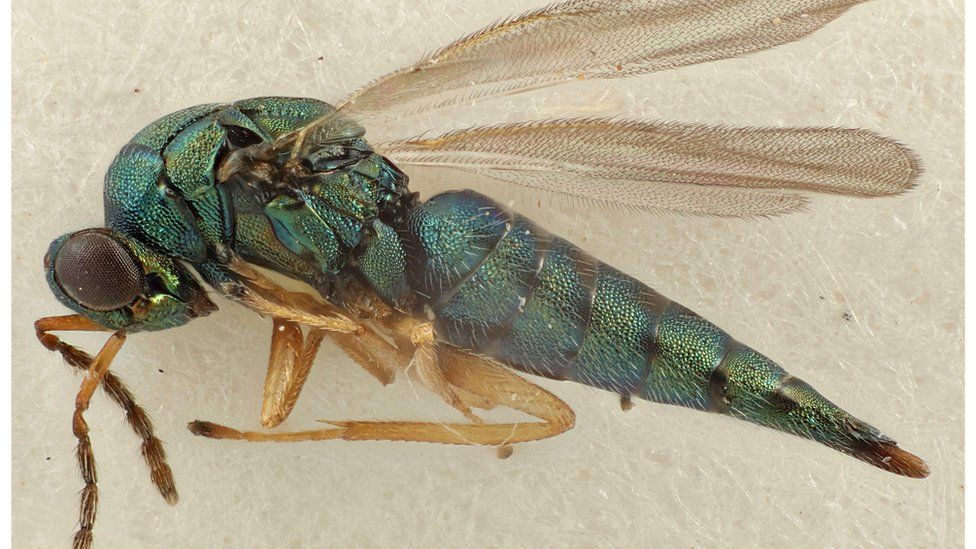Natural History Museum describes more than 800 new species
- Published

Scientists and associates of the Natural History Museum described more than 800 new species in 2023.
They include a genus of wasp called Dalek, in celebration of the 60th anniversary of Doctor Who.
The new species, which include an ancient dinosaur and worms at the bottom of the ocean, were described in research papers released by the museum.
A spokesperson said describing a new species on a morphological and genetic scale helped protect biodiversity.
They added that the "extraordinary" number of species described was largely due to the ongoing work of the museum's scientific associates Dr John Noyes and Christer Hansson.
Between them they published details of 574 new species as part of their work documenting insects in Costa Rica.
Last year, the museum identified 351 species.
Dr Noyes said that in the past 60 years or so, three species of Encyrtidae - a group of parasitic wasps - had been "incredibly important".
"One in preventing the possible starvation of up to 300 million people in Africa, a second preventing the rainforest from destruction in Thailand, and another the collapse of the economy of Togo," he said.
The museum described a total of 619 new species of wasps and 58 new species of beetles this year.
They included a number of vivid green and pinkish-orange darkling beetles from China and Laos, and four long-snouted weevils from South Africa.
Also described in scientific papers were newly documented crabs, worms, bees and stick insects - one of which was found on the side of a bin.
Researchers also described the past diversity of the planet, including a toothed bird, the largest penguin ever known to exist, fossilised turtles and an ancient creature called Anomalocaris dalyae, which would have been the largest predator in the ocean roughly 500 million years ago.
There was also a newly documented dinosaur from the Isle of Wight, which was named Vectipelta barretti after the museum's Prof Paul Barrett.
And a number of extraterrestrial classifications were made, with 14 new meteorites described by museum scientists and a new species of mineral named Mikecoxite.
Listen to the best of BBC Radio London on Sounds and follow BBC London on Facebook, X and Instagram. Send your story ideas to [email protected]
Related Topics
- Published5 December 2023
- Published27 September 2023
- Published15 September 2023